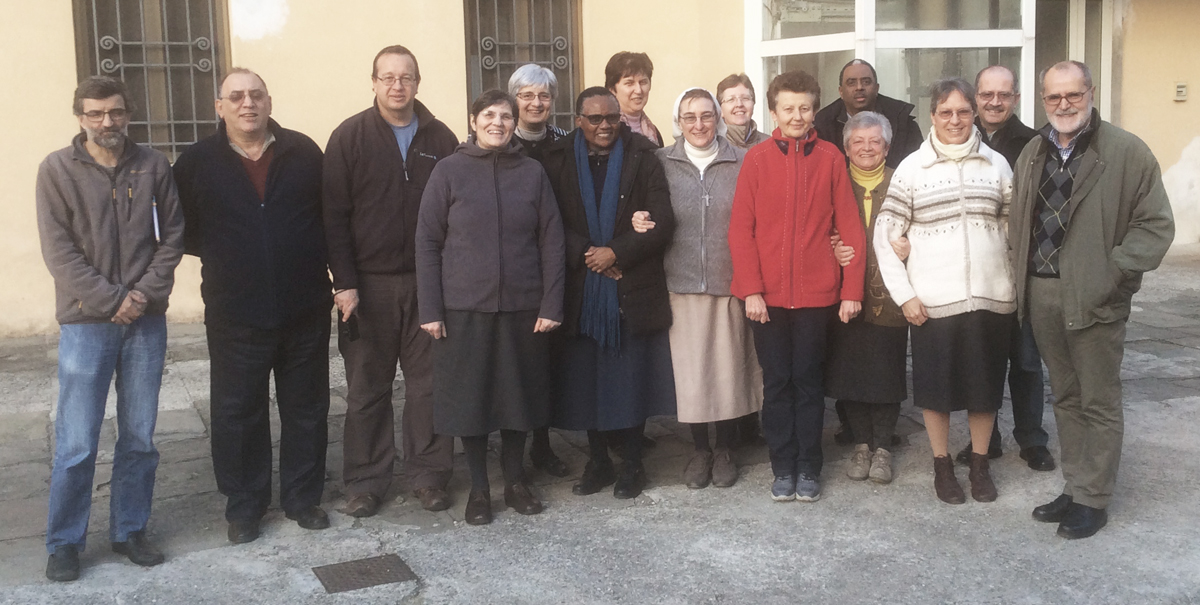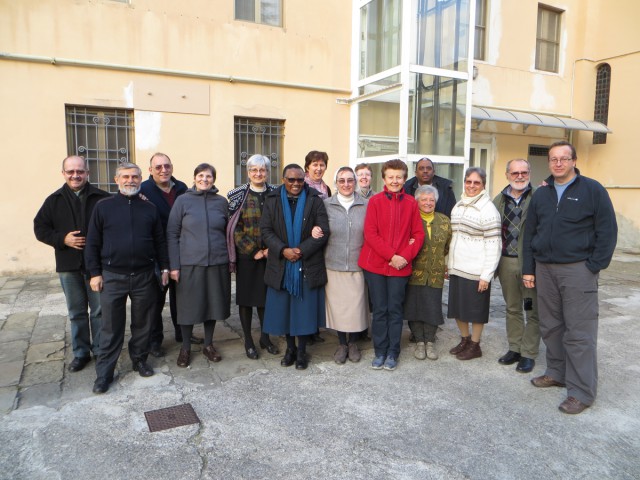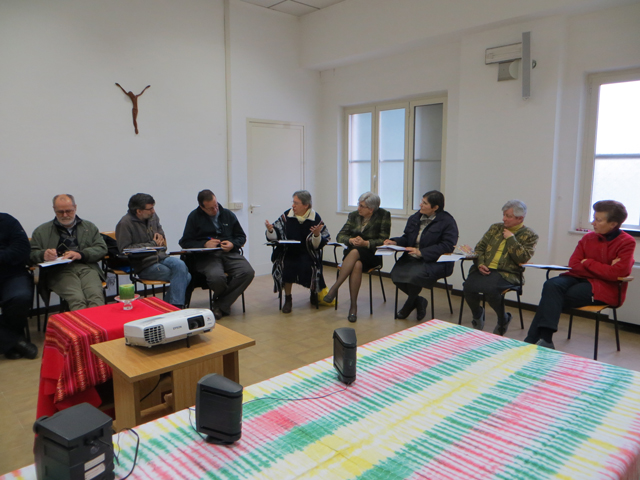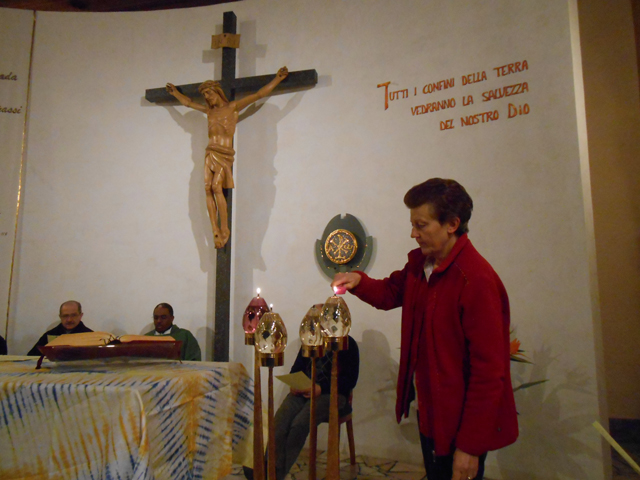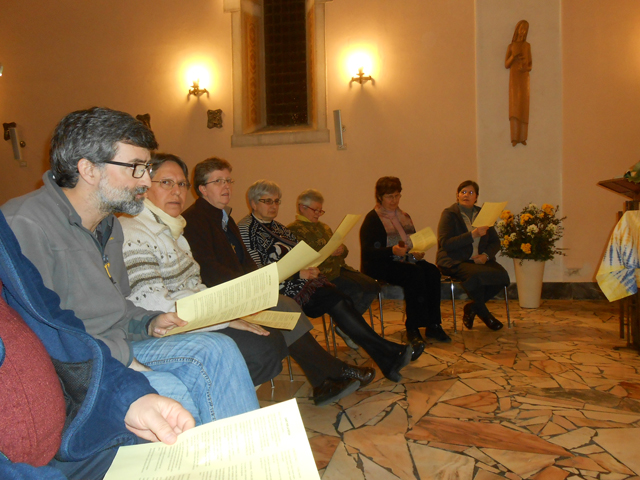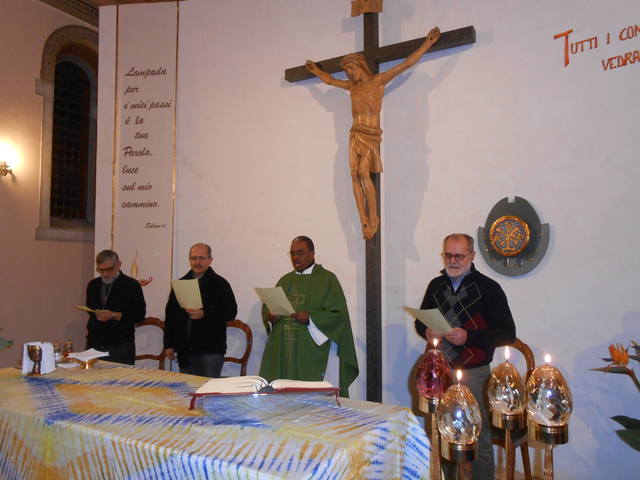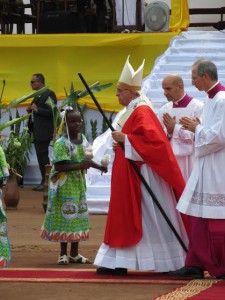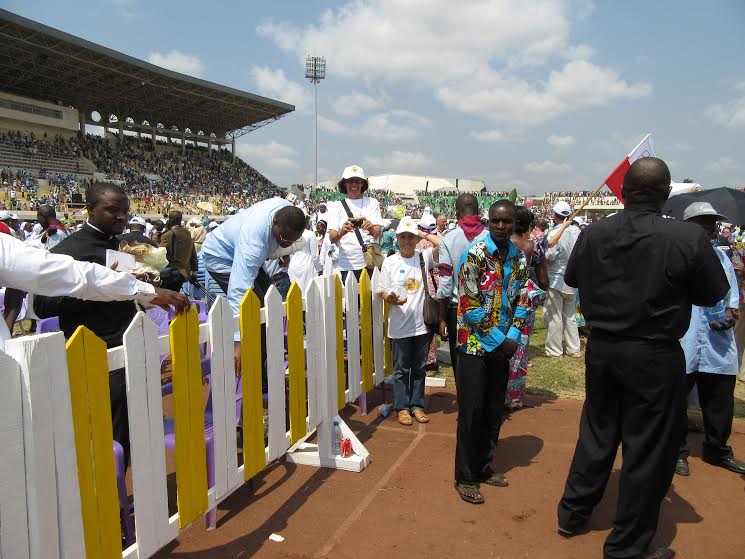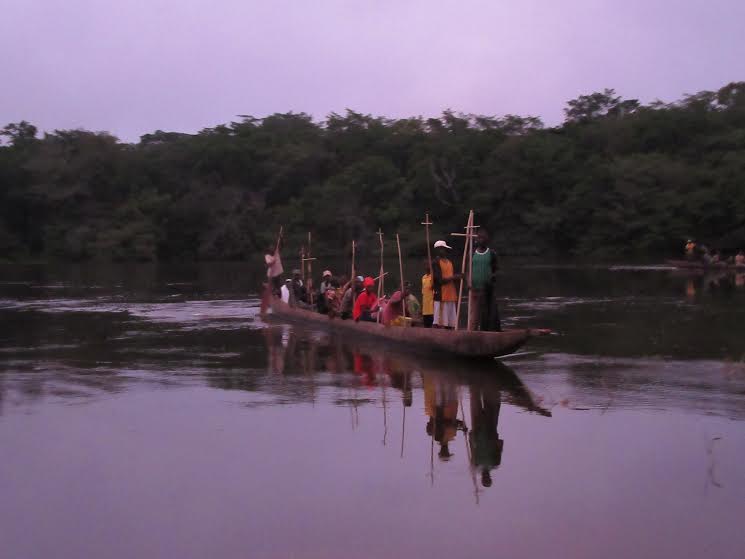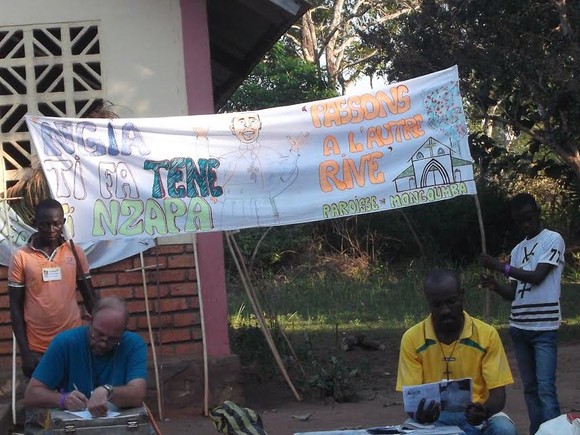
On 25 November, the pilgrimage walk of the faithful of our parish started from Mongoumba to Bangui to participate in the ceremonies for the visit of the Pope. There were four groups of 18 people, one of them composed only of pygmies recently baptized.
We get up every day at 2.30am, ate a sweet rice porridge, so that everyone could have energy to walk. We began with prayer, then everybody start to walk, singing beautiful songs in Sango.
Every day they covered about 30kms, with joy, despite the “blisters” on the feet …
When it reached the intended location for the night, they have lunch and in the afternoon, after a short break, a catechesis on the theme of the day, followed by the Eucharist.
The topics presented were: “Reconciliation”, “Laudato Si”, “The joy of the Gospel” and “Blessed are the peacemakers”, interesting subjects that pilgrims greatly appreciated. In each catechesis was distributed to each pilgrim a symbolic ribbon theme: violet, green, red and white.
After the Mass we dined before the last rays of light.
To 20 pm everyone was in bed, I mean, sleeping on a sailcloth lying on the ground, inside or outside the chapel. The communities where we rest welcomed us warmly and showed all their support, fetching water and firewood. Two of them prepared food for more than 70 people.
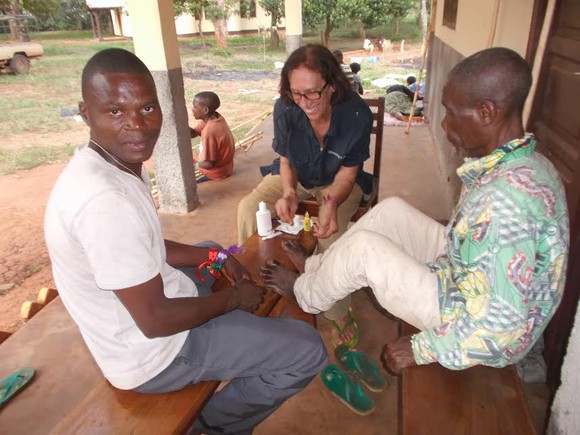
Elia, three cooks (volunteers) and I were covering the pilgrimage by car, carrying everything you need to cook for six days, which eventually turned out to be seven.
Elia was tireless, with all who approached her with the injured or sore feet…
The arrival in Bangui was Saturday morning. People on the street stopped amazed to see all these people on pilgrimage, each with its cross highest than oneself, and a lively group of Pygmies in the middle. All of Mongoumba.
Activities in the house of the Comboni Missionaries in Bimbo, where the same as where we were staying, equal to those of the previous days.
It was four days of walking in which no one gave up despite the fatigue … we hope that this pilgrimage bear fruit; conversion to the Lord, in every heart, protective Earth people “hit Sopo/bata Sesse” happy preach the Gospel, men and women of peace.
A hug
Maria Augusta, Mongoumba CLM




